Choosing the Right Material: A Comparison of Wood, Vinyl, Aluminum, and Chainlink Fences
Jan 02, 2024

Choosing the right material for your wooden privacy fence is an essential decision that impacts both the appearance and functionality of your property. With options such as wood, vinyl, aluminum, and chainlink, making the right choice can be overwhelming.
This comprehensive guide will explore the benefits, drawbacks, and customizations of each material, helping you make an informed decision that suits your needs and preferences.
Key Takeaways
-
Wood fences offer aesthetic, design and cost benefits but require maintenance.
-
PVC/vinyl fences are low-maintenance and durable with customizable aesthetics.
-
Aluminum fencing provides a stylish, long lasting option while chainlink offers an economical solution for security.
Benefits of Wood Fences
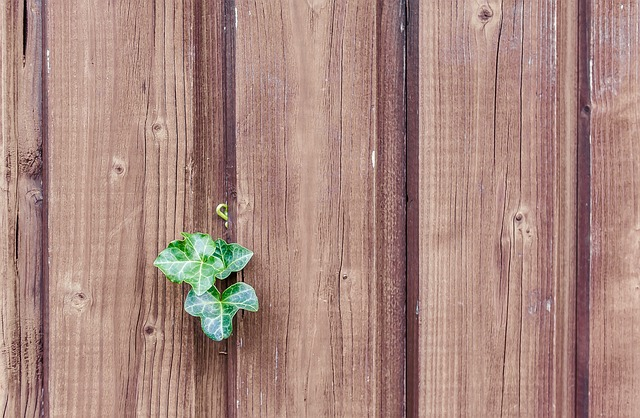
Wood fences have long been a popular choice for homeowners, offering a natural aesthetic, versatile design options, and affordability. Their classic appearance can enhance the curb appeal of your property while providing the desired level of privacy and security.
With various styles available, such as board-on-board, stockade, and dog-ear, wood fences cater to a wide range of personal tastes and requirements.
However, when selecting a wood fence, maintenance and potential drawbacks, such as susceptibility to rot and pest infestations, should be taken into account.
Aesthetics

One of the most significant advantages of wooden fences is their ability to impart a warm, natural, and rustic look to your property.
This timeless appeal can seamlessly blend with your home’s aesthetic, creating a cohesive and inviting atmosphere.
Some of the most visually appealing wood types for fences include red cedar and redwood, both of which boast rich colors and textures that can elevate the overall appearance of your outdoor space.
Design Versatility
Wood fences offer a high degree of design versatility, allowing you to customize the style, height, and finish to suit your preferences. Some popular wood fence designs include:
-
Traditional picket fences
-
Modern horizontal slat designs
-
Privacy fences with solid panels
-
Lattice fences with decorative patterns
With wood fences, a bamboo fence, and a stone fence, you can create a fence that complements your home’s architecture and landscape.
Also, you can stain or paint wood fences in an array of colors, creating endless possibilities for a functional and visually appealing fence.
Affordability
Compared to fencing materials like vinyl or aluminum, wood fences are generally less expensive, appealing to homeowners who are mindful of their budget. With an average cost of approximately $14-$31 per linear foot, wood fences can enhance your property’s curb appeal without incurring excessive costs.
However, considering the costs associated with maintenance and potential repairs is important, as wood fences may necessitate more upkeep than vinyl or aluminum alternatives.
Types of Wood for Privacy Fences
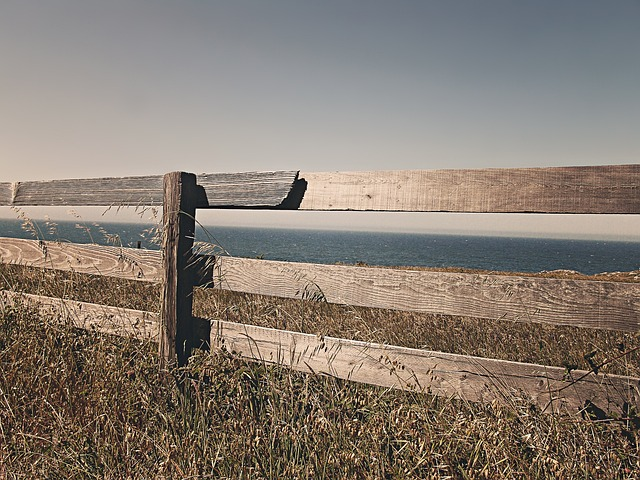
Selecting the appropriate wood for your privacy fence involves considering popular options such as:
-
Cedar: known for its natural beauty, durability, and resistance to decay
-
Pressure-treated pine: affordable and resistant to rot and insects
-
Redwood: naturally resistant to decay and has a rich, attractive appearance
Grasping the characteristics of these wood types can aid in making a decision that aligns with your specific needs and preferences.
Cedar

Cedar is a popular choice for privacy fences due to its:
-
Natural resistance to decay and insects
-
Attractive appearance
-
Durability and longevity, thanks to the natural oils present in cedar wood that make it resistant to rot and insect infestations.
With proper maintenance, a cedar fence can last up to 20 to 30 years, making it a wise investment for homeowners seeking a balance between aesthetics and functionality.
Pressure-Treated Pine

Pressure-treated pine is an affordable option that has been treated to resist decay and insects, making it a cost-effective choice for privacy fences.
However, this wood type may require more maintenance compared to other options, such as cedar or redwood.
Pressure-treated pine can be personalized with paint or stain to match your property’s aesthetic, and its ease of installation makes it a popular choice for DIY enthusiasts.
Redwood

Redwood is a premium option known for its beautiful color and natural resistance to decay and insects. While redwood can be more expensive than other wood types, its durability and eye-catching appearance may make it a worthwhile investment for homeowners seeking a high-quality and long-lasting privacy fence.
With proper care, a redwood fence can last up to 25 years, providing you with ultimate privacy and an elegant addition to your property.
Benefits of PVC / Vinyl Fences
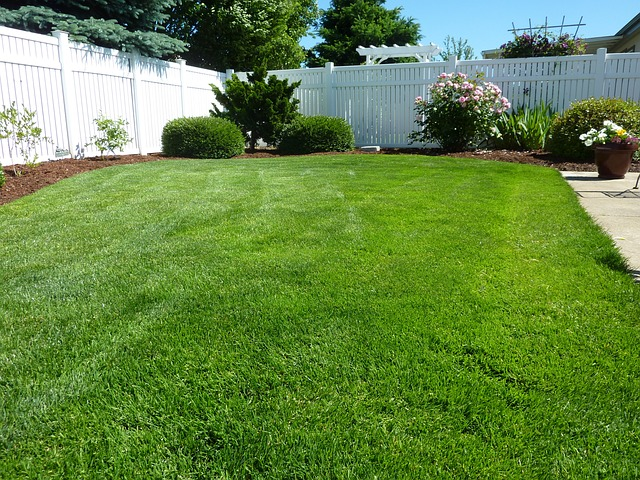
PVC/vinyl fences offer a low-maintenance alternative to wood, making them an attractive option for homeowners seeking a durable and versatile fencing solution. Some benefits of PVC/vinyl fences include:
-
Minimal upkeep requirements
-
Customizable designs
-
Durability
-
Long-term cost-effectiveness
While generally more expensive than wood fences, these advantages may make PVC/vinyl fences a more desirable option for some homeowners.
However, considering factors like aesthetics and design versatility is important when choosing a PVC/vinyl fence, as they might not offer the same natural appearance or customization options as wood fences.
Aesthetics
Vinyl fences can provide a similar aesthetic to that of wood, with the added benefit of requiring less maintenance.
This can make them an attractive option for homeowners who appreciate the look of a wooden fence but prefer a more polished and consistent appearance.
While vinyl fences, such as a tall vinyl fence, may not be able to replicate the organic charm of natural wood, they do come in a wide variety of colors and styles, allowing for a range of customization options to suit different tastes.
Design Versatility
A key advantage of vinyl fences is their design versatility. With a variety of styles like picket, screen, and post-and-rail available, you can customize your fence to align with your property’s aesthetic and needs.
Vinyl fences also come in a range of colors, offering the chance to create a fence that complements your home’s exterior design.
This versatility makes vinyl fences a popular choice for homeowners seeking a durable and low-maintenance fencing option.
Affordability
While vinyl fences can be more expensive than wood fences, their low-maintenance nature may make them a more cost-effective option in the long run. Here are some reasons why:
-
Vinyl fences have an average cost of approximately $30 to $60 per linear foot, which may present a higher initial cost than wood fences.
-
However, vinyl fences require minimal upkeep compared to wood fences, saving you time and money in the long term.
-
Vinyl fences are resistant to rot and insect damage, ensuring their durability and longevity.
-
With their low-maintenance nature and resistance to damage, vinyl fences can be a worthwhile investment for homeowners seeking a durable and low-maintenance fencing solution.
Benefits of Aluminum Fences

Aluminum fences provide a durable, low-maintenance option with customizable designs, making them an attractive alternative for homeowners seeking a balance between aesthetics and functionality.
While aluminum fences may not offer the same level of privacy as wood or vinyl fences, they can be an elegant and long-lasting addition to your property.
However, aluminum fences can be more expensive than wood fences, so it is essential to weigh the benefits and drawbacks of each material before making a decision.
Aesthetics
Aluminum fences can be designed to mimic the appearance of wrought iron fences, providing an elegant and durable option for your property. With a variety of styles and colors available, aluminum fences can be customized to complement your home’s architecture and landscape.
Although aluminum fences may not provide the same natural look as wood or vinyl fences, their classic and elegant design can add a touch of sophistication to your outdoor space.
Design Versatility
Aluminum fences offer a considerable degree of design versatility, making them a popular choice for both residential and commercial properties.
With a range of styles and heights available, aluminum fences can be tailored to suit your specific needs and preferences.
However, it is important to note that aluminum fences may not provide the same level of privacy as other materials, such as wood or vinyl fences.
Affordability
While aluminum fences can be more expensive than wood fences, their durability and low-maintenance nature may make them a worthwhile investment.
With an average cost of approximately $24 to $32 per linear foot, aluminum fences may present a higher initial cost than wood fences.
However, their minimal upkeep requirements and resistance to rust can make them a more cost-effective option in the long run.
Benefits of Chainlink Fences
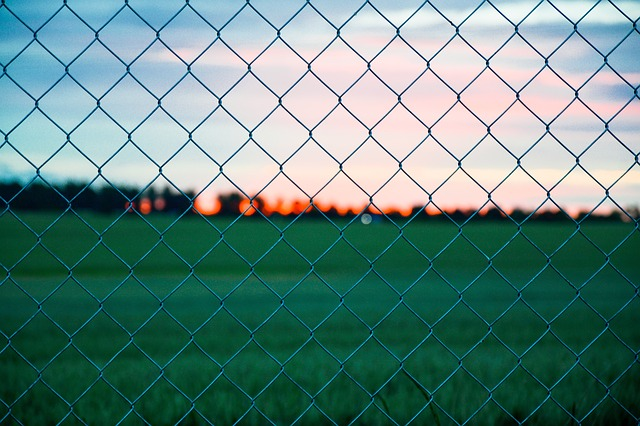
Chainlink fences, also known as wire fence, offer a cost-effective and versatile option for homeowners seeking a budget-friendly fencing solution.
While they may not provide the same level of privacy or aesthetics as wood, vinyl, or aluminum fences, chainlink fences can be an affordable option for securing your property.
However, it is important to consider factors such as design versatility and maintenance when choosing a chainlink fence, as they may not offer the same customization options as other materials.
Aesthetics
While chainlink fences may not offer the same visual appeal as wood, vinyl, or aluminum fences, they can serve as an affordable and functional solution for securing your property.
Some benefits of chainlink fences include:
-
Cost-effectiveness
-
Ease of installation
-
Durability
-
Low maintenance
Chainlink fences are often used in commercial and industrial settings due to these advantages.
However, homeowners seeking a more visually appealing fencing option may prefer the aesthetics of wood, vinyl, or aluminum fences.
Design Versatility
Chainlink fences can be customized with various heights and colors, allowing for a degree of design versatility. However, they may not provide the same level of privacy as other materials, such as wood or vinyl fences.
To enhance the privacy of a chainlink fence, options such as privacy slats or screens can be added, or the fence can be covered with climbing plants or hedges.
Affordability
Chainlink fences are generally the most affordable option when it comes to fencing materials, making them a popular choice among budget-conscious homeowners.
With an average cost of approximately $12 to $33 per linear foot, chainlink fences can provide a cost-effective solution for securing your property without sacrificing functionality.
However, it is essential to consider factors such as aesthetics and design versatility when choosing a chainlink fence, as they may not offer the same visual appeal or customization options as other materials.
Customizing Your Wooden Privacy Fence
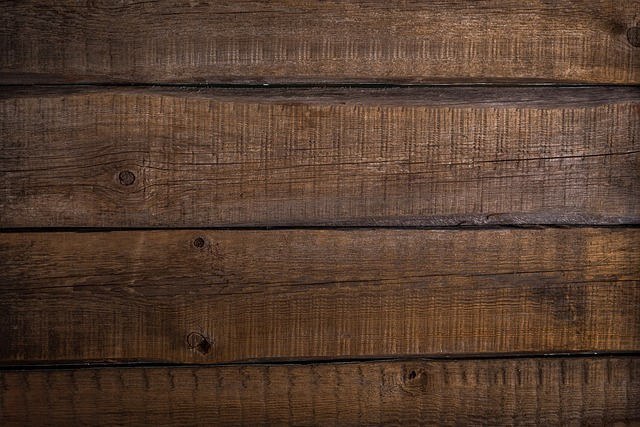
Customizing your wooden privacy fence with paint, stain, and decorative elements can significantly enhance its appearance and complement your property.
Whether you choose to add lattice panels, top caps, or trims, these customizations can help create a fence that is both functional and visually appealing.
By considering the various design options available, you can create a fence that not only provides privacy and security but also adds value and curb appeal to your property.
Paint and Stain
Painting or staining your wood fence can help protect it from the elements and allow you to match it to your home’s exterior.
Paint provides a barrier against moisture, while stain penetrates the wood, offering greater protection against rot, mold, and insects.
Depending on the type of wood and the desired aesthetic, various types of paint and stain can be used to customize your fence and ensure it remains protected and looking its best for years to come.
Decorative Elements
Adding decorative elements, such as lattice or post caps, can enhance the appearance of your wooden privacy fence and create a personalized look that reflects your style.
A decorative fence with lattice panels can provide an extra layer of privacy while allowing light to filter through, creating a visually appealing and functional design element.
Post caps and trims can add a finishing touch to your fence, giving it a polished and complete look that complements your home’s exterior.
Maintaining Your New Fence
Regular upkeep, which includes cleaning, sealing, and repairing damaged boards, can help extend your fence’s lifespan and ensure it stays in prime condition.
By dedicating time to fence maintenance, you can ward off issues such as rot, mold, and insect infestations, which can cause damage over time and shorten your fence’s overall lifespan.
Whether you have a wood, vinyl, or aluminum fence, proper maintenance can ensure your investment remains functional and visually appealing for years to come.
Cleaning

Cleaning your fence regularly can help prevent the buildup of dirt, mold, and mildew, which can cause damage over time.
Depending on the material of your fence, various cleaning methods and solutions can be used to remove dirt, algae, and stains.
For wooden fences, a solution of dish soap, white vinegar, and warm water can be used to clean the surface and remove any buildup.
Vinyl and aluminum fences can be cleaned with a garden hose and a soft cloth, while more stubborn stains may require a specialized cleaning solution.
Sealing and Staining

Sealing and staining your wood fence can help protect it from the elements and maintain its appearance.
By applying a weatherproof sealant or stain every two to three years, you can ensure your fence remains protected from moisture, sunlight, and insects.
The type of sealant or stain used will depend on the type of wood and the desired aesthetic, with various options available to suit different preferences and requirements.
Repairing Damaged Boards
Repairing damaged boards promptly can help prevent further damage and maintain the integrity of your fence. Here are some steps to follow:
-
Regularly inspect your fence for signs of damage, such as splits or cracks, rotting wood, or loose screws and nails.
-
If you identify any issues, take the necessary steps to repair or replace the affected boards.
-
Ensure your fence remains in optimal condition to continue providing privacy and security for your property.
Installation Tips for Your New Fence
Appropriate planning, material selection, and professional installation can contribute to the success of your new fence project.
By investing time in researching local regulations, securing any required permits, and selecting the right materials for your needs and budget, you can sidestep potential problems and ensure a seamless installation process.
Whether you decide to tackle the project yourself or hire a professional installer, following these tips can help you create a fence that not only meets your requirements but also enhances the appearance and value of your property.
Planning and Preparation

Before installing your new fence, it is essential to check local regulations and obtain any necessary permits to ensure a smooth installation process.
This may involve contacting your local planning department or building inspector to determine if a permit is required and to learn about any restrictions or guidelines that may apply to your project.
Additionally, it is important to verify property lines and adhere to any homeowners association rules to avoid potential conflicts with neighbors or local authorities.
Selecting Materials:

Selecting the right materials for your fence is an important decision that will impact both the appearance and functionality of your property.
Consider factors such as the purpose of the fence, the climate in your region, and the level of maintenance you are willing to undertake when choosing the best material for your needs.
Popular options for residential fencing include wood, vinyl, aluminum, and chainlink, each offering unique benefits and drawbacks to consider.
Hiring a Professional Installer - Fenceworks A.K.A "The Guy on 41"

Hiring a professional installer, such as Fenceworks, can help ensure a high-quality installation and save you time and effort.
With over 100 years of combined experience in fence construction, their skilled team of installers can complete your project to the highest standards, using top-grade materials and constructing the fence on-site to guarantee exact measurements.
By entrusting your fence installation to a reputable company like Fenceworks, you can have peace of mind that your investment will be well-protected and provide:
-
Privacy
-
Security
-
Durability
-
Longevity

In conclusion, selecting the most suitable material for your fence is a pivotal decision, one that can significantly influence the overall appearance, functionality, and value of your property. It's not just a choice of aesthetics; it's an investment in your home's security, privacy, and curb appeal.
Each fencing material—wood, vinyl, aluminum, and chainlink—brings its unique set of advantages and disadvantages to the table. By taking the time to carefully assess these factors, you empower yourself to make an informed decision that aligns seamlessly with your specific needs and preferences.
Wooden fences, for instance, exude a timeless charm and natural beauty. However, they require periodic maintenance and may be susceptible to weathering over time. On the other hand, vinyl fences offer low maintenance and durability but may lack the warmth and authenticity of wood.
Aluminum fences combine strength with a sleek and modern appearance, making them an excellent choice for those seeking both security and style. Meanwhile, chainlink fences provide affordability and visibility but may not offer the privacy that other materials provide.
However, the decision-making process doesn't stop at material selection alone. Personalization plays a crucial role in elevating the look and feel of your fence. Consider the power of paint, stain, and decorative elements in enhancing your fence's appearance and harmonizing it with your home's exterior. A well-chosen color or stain can add character and sophistication, while decorative elements such as finials or lattice work can infuse your fence with personality.
It's also essential to emphasize the importance of proper planning and professional installation. These aspects ensure that your fence not only meets but exceeds your expectations. A well-designed and skillfully installed fence not only provides security and privacy but also becomes an integral part of your property's aesthetic appeal.
Remember that your new fence is not just a barrier; it's an extension of your home. It can transform your outdoor space into a haven of privacy and serenity or a showcase of elegance and style. With the right material, thoughtful customization, and expert installation, your fence will serve as a testament to your discerning taste and commitment to enhancing your property's value.
In the years to come, your well-considered choice of fencing material and design will continue to deliver the privacy, security, and curb appeal you desire, making your investment a lasting and rewarding one. So, take the time to explore your options, consult with professionals, and embark on this journey to enhance your property with the perfect fence—one that not only meets your needs but also elevates the overall charm and functionality of your home.
Frequently Asked Questions
What is the cheapest privacy fence to put up?
Chain link fence is the most economical option, typically costing around $25 per foot. Picket fencing is also relatively inexpensive and provides privacy, protection and a boost to curb appeal.
What type of wood is best for a privacy fence?
Redwood is a popular choice for privacy fencing due to its durability, insect-resistance, and ability to withstand weather. It is often considered the best wood for a privacy fence.
Is it cheaper to buy fence panels or pickets?
Typically, fence panels are less expensive than pickets due to the materials used and lack of customizability. However, they may not be the best option for creative spaces or oddly-shaped yards.
How can I customize the height of my fence?
Customizing the height of a fence can be achieved through the use of fence toppers, additional fence boards, post extenders, or half-lap joints.
How often should I clean and stain my wood fence?
Clean and stain your wood fence every two to three years to keep it looking great and protected from the elements.



